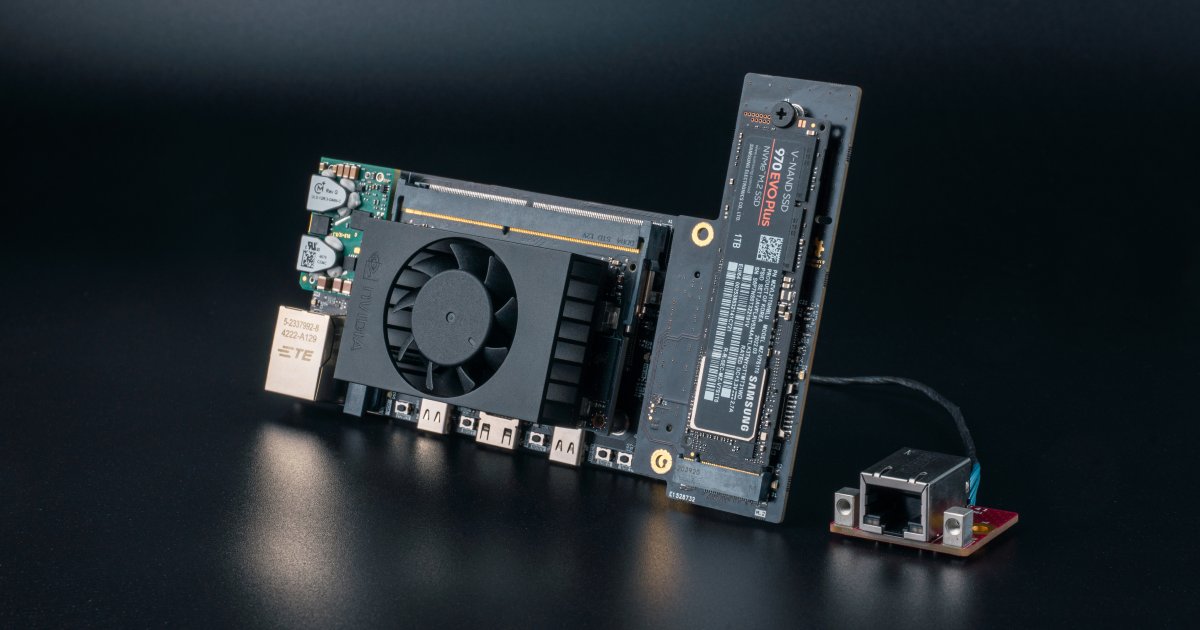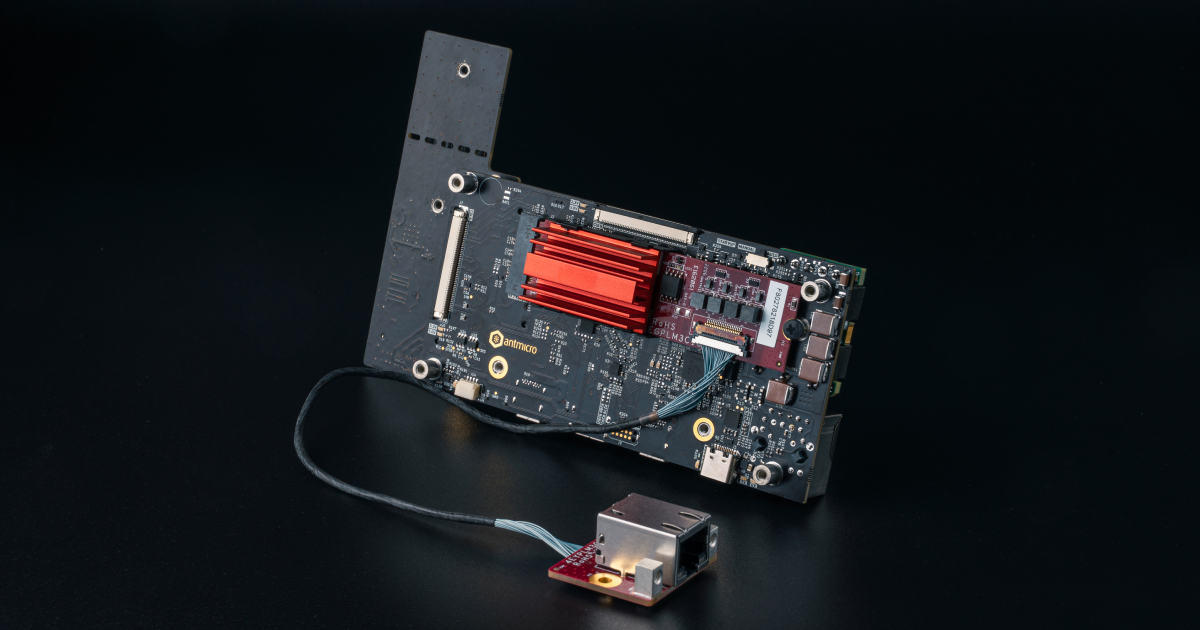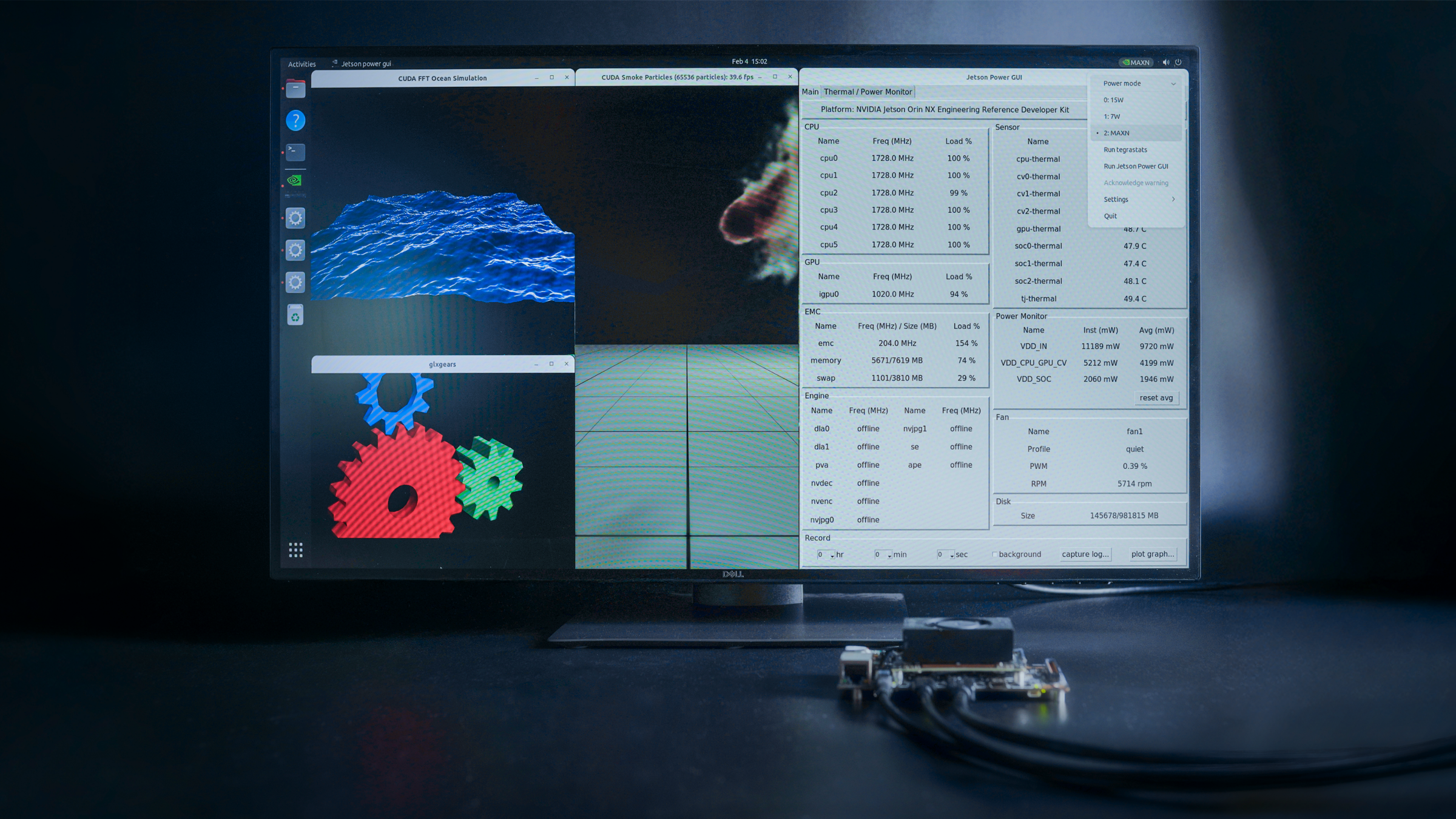At the end of 2022, we introduced the open hardware Jetson Orin Baseboard as the successor to the original Jetson Nano Baseboard. The baseboard, like the original, has become the starting point for many customer projects involving complex edge AI-enabled devices deployed in a wide range of fields, including automotive, space, agriculture as well as medical and consumer applications.
Like with most of Antmicro’s open source hardware baseboards, the Jetson Orin Baseboard, or JOB for short, is meant to accommodate use cases where size and weight can be a constraint, without compromising the powerful Jetson SoM’s capabilities. To achieve this, the miniaturized board exposes a plethora of interfaces using small footprint connectors, and provides additional expandability thanks to an on-board M.2 key M connector, among others.
Perhaps most importantly, JOB features a board-to-board expansion connector that can be used to develop external modules like the Storage Expansion Board we are presenting today. This expansion board provides a secondary M.2 connector and microSD card slot allowing connection of more storage media, which can be used as a boot source.
In this article, we will describe the features of the Storage Expansion and what it enables when used with Antmicro’s open source Jetson Orin Baseboard.

The versatile features of the JOB Storage Expansion Board
The Jetson Orin Baseboard was designed to provide demanding high-speed IOs such as USB, GbE and MIPI CSI-2 with a 4-lane PCIe Gen 4 in an M.2 key M 2280 form factor slot.
An additional expansion slot in the form board-to-board connector exposes a range of further interfaces, such as 2-lane PCIe or two 1-lane PCIe (which is configurable in the Jetson Orin), USB 3.2 with the capability of transferring data at 10 Gbps, as well as I2S, UART, 2x SPI, 2x I2C and CAN interfaces. Alternatively, it can send and receive GPIO signals from the Jetson Orin, and either supply up to 30W to connected devices or provide power for the Jetson module itself.
The Storage Expansion Board fits into that slot and provides the possibility of using either M.2 2280 or 2242 M.2 key M cards, acting as an alternative storage solution to the M.2 slot on the JOB. The board also contains a MicroSD card reader as an auxiliary feature, connected to the SoM over a USB 2.0 interface, allowing for easy updates to software by using a standardized and highly portable storage medium.
By utilizing the Storage Expansion M.2 connector for booting the system, the M.2 key M connector on the bottom of the Jetson Orin Baseboard is freed, which is especially important because it provides PCIe Gen 4 with four lanes as well as root port and endpoint capabilities. When configured as a root port device, communication with PCIe devices, such as with an additional NVMe drive is possible. When configured as an endpoint device, the Jetson Orin NX/Nano can be connected over PCIe to e.g. a more powerful host machine, opening the option to use it as a graphical or AI accelerator.
Below, the board layout of the Storage Expansion is presented in an interactive diagram created in Antmicro’s Visual System Designer. Navigate the diagram by clicking on individual components to provide detailed information about the component selected, or by zooming in and out to view connections, and navigate to the relevant components in our open component database by right-clicking on them.

(For an interactive version of the diagram, visit the desktop version of the website)
Extra storage boost for edge AI applications
Since the Storage Expansion leaves the M.2 socket on the Jetson Orin Baseboard free, it can be used for even more powerful devices that require a high rate of data throughput, such as Thunderbolt or 10GbE controllers, taking full advantage of the four PCIe lanes available, as illustrated below.

With the raw power of the Jeston Orin and the capabilities enabled by Antmicro’s Jetson Orin Baseboard combined with the Storage Expansion Board, we can easily prototype highly capable platforms for our customer’s edge AI purposes, and then develop customized hardware and software that constitutes the final product.
If you would like to find out more about Antmicro’s engineering services, and how we can help build your next-gen device, check out our Open Hardware Portal with all the baseboards and accessories it showcases and feel free to get in touch with us at contact@antmicro.com to find out more about how our open source software, AI and hardware development flow can benefit your business.


